The job of the Colorado Watershed Assembly is to highlight different watershed groups in Colorado that are doing something interesting and exciting to help their community. In this way, we help knowledgeable citizens gain a better understanding of the diversity and range of watershed-based organization in Colorado. We try to provide a network and to promote open discussions among groups with similar interests. These highlights will also be included in the Inflow Newsletter, so keep an eye out for them! If your organization is working on something that you would like to share, please email our Membership Coordinator, Erika Shioya at erikas@coloradowater.org.
Group Highlights have moved to our blog! Check it out there. For a quick link to a specific group highlight, click on a link below:
- South Platte Urban Waters Partnership Highlight - From the Inflow Newsletter: April 25, 2013
Colorado River Watch Program Highlight - From the Inflow Newsletter: March 27, 2013
 Colorado River Watch is a program of the Colorado Watershed Assembly and Colorado Parks and Wildlife. River Watch volunteers have been providing accurate data on Colorado’s waters for the past 22 years. This valuable statewide program allows participants to actively participate in the protection of their watersheds through citizen-based observation and data collection (citizen science) and provides reliable monitoring data to state agencies which is used in the regulatory process. In an average year, there are 110 groups throughout Colorado participating in River Watch (see map here). The majority of River Watch groups - approximately 80% - are school groups. We are able to offer students and their teachers a hands-on, science education experience they otherwise might not have. Colorado Parks and Wildlife provides professional-grade tools and supplies and we coordinate the data collection and analysis.
Colorado River Watch is a program of the Colorado Watershed Assembly and Colorado Parks and Wildlife. River Watch volunteers have been providing accurate data on Colorado’s waters for the past 22 years. This valuable statewide program allows participants to actively participate in the protection of their watersheds through citizen-based observation and data collection (citizen science) and provides reliable monitoring data to state agencies which is used in the regulatory process. In an average year, there are 110 groups throughout Colorado participating in River Watch (see map here). The majority of River Watch groups - approximately 80% - are school groups. We are able to offer students and their teachers a hands-on, science education experience they otherwise might not have. Colorado Parks and Wildlife provides professional-grade tools and supplies and we coordinate the data collection and analysis.
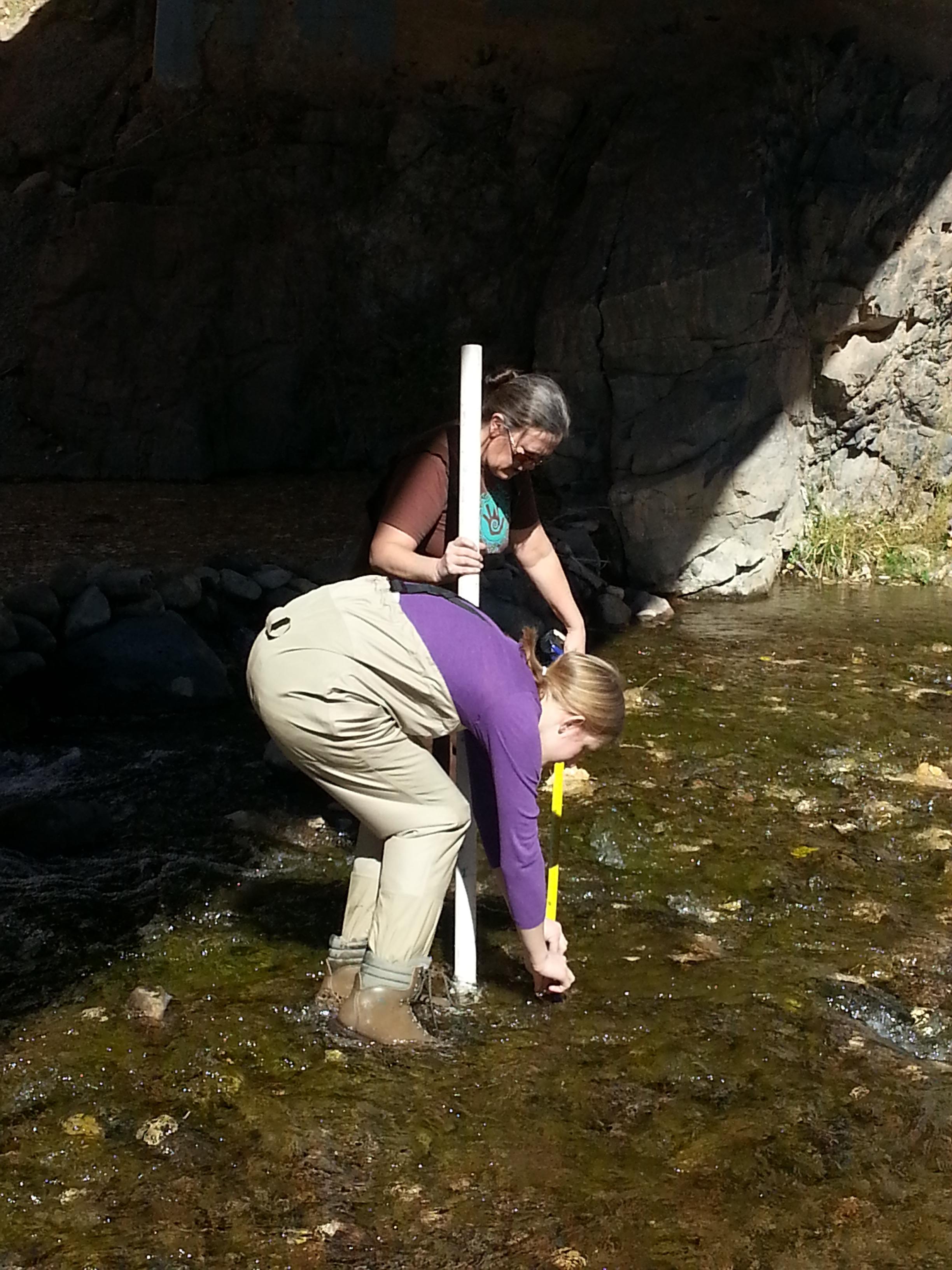
River Watch data has been important in providing sound science to support the decision-making processes of the Colorado Water Quality Control Commission (CWQCC). Our high quality, volunteer generated data has been used to: evaluate appropriate phosphorous and nitrogen standards for the lakes and streams of Colorado, provide reliable chemical data to inform decisions relating to impaired water bodies that are not meeting their standards for beneficial uses, and assess aquatic life impairments based on macroinvertebrate samples.
Right now we are wrapping up our annual site visits. These visits allow us to check in with each group to review methodology and procedures, replace equipment, restock supplies, and perform quality assurance tests that permit our data to be used in the decision making process. This year we have visited 117 groups around Colorado from Burlington to Gateway and from Ft. Collins to Trinidad. Our volunteer groups are dedicated. The average volunteer has been participating for 12 years!
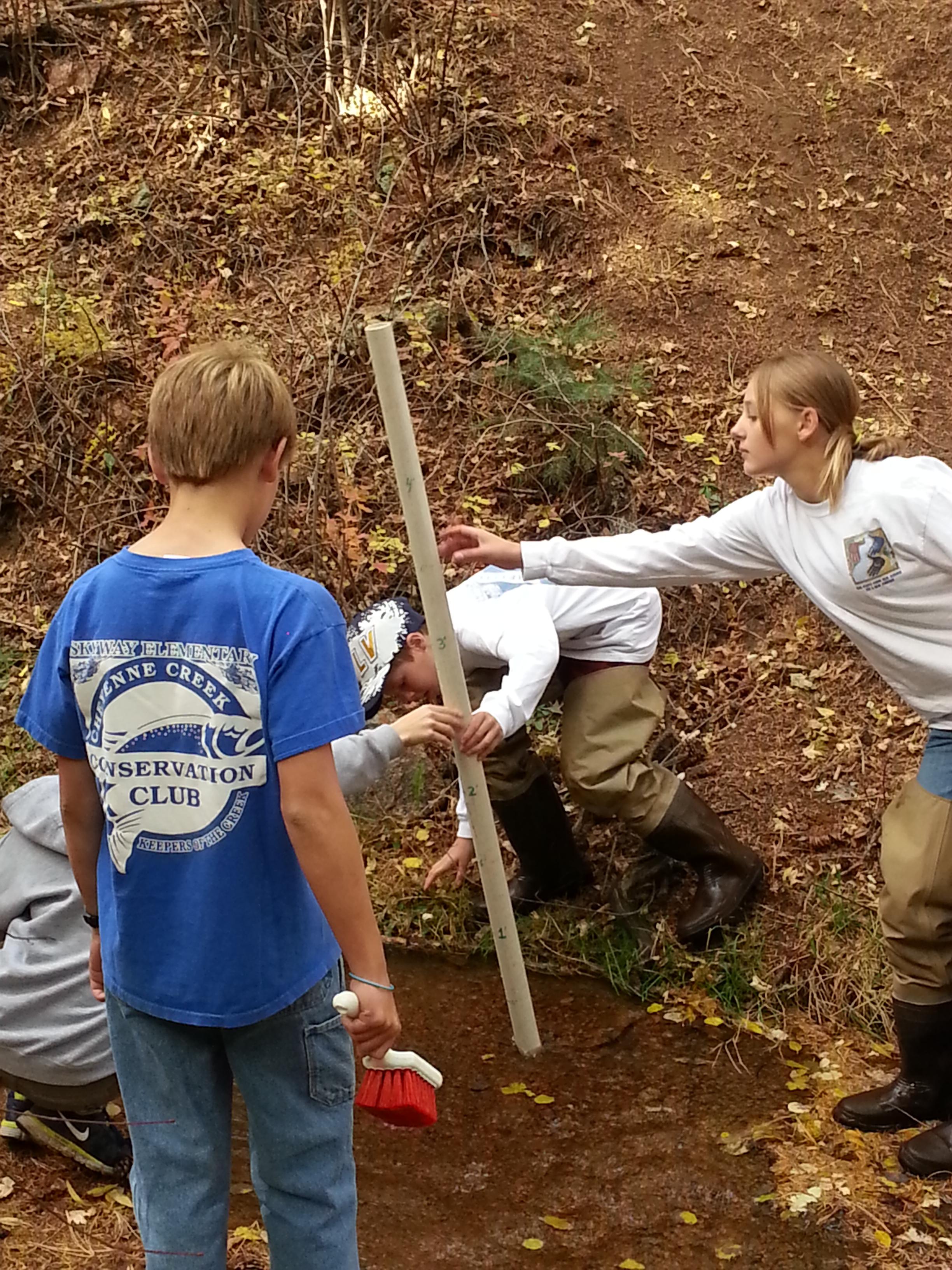
With your support and the support of Colorado Parks & Wildlife, we plan to host two 2013 training dates. If you are interested in starting a River Watch group, or just want a refresher, be sure to mark your calendars and sign up on our website. To learn more about the training and to register, click here:
- July 23- 26: we will be meeting at Mountain Park Environmental Center in Beulah, just southwest of Pueblo. The deadline to register for this event is June 15th.
- October 29 – November 1: join us at Camp Cedaredge, located in Cedaredge, CO on the Western Slope. The deadline to register for this event is October 1st.
Uncompahgre Watershed Partnership (UWP) Highlight - From the Inflow Newsletter: February 27, 2013
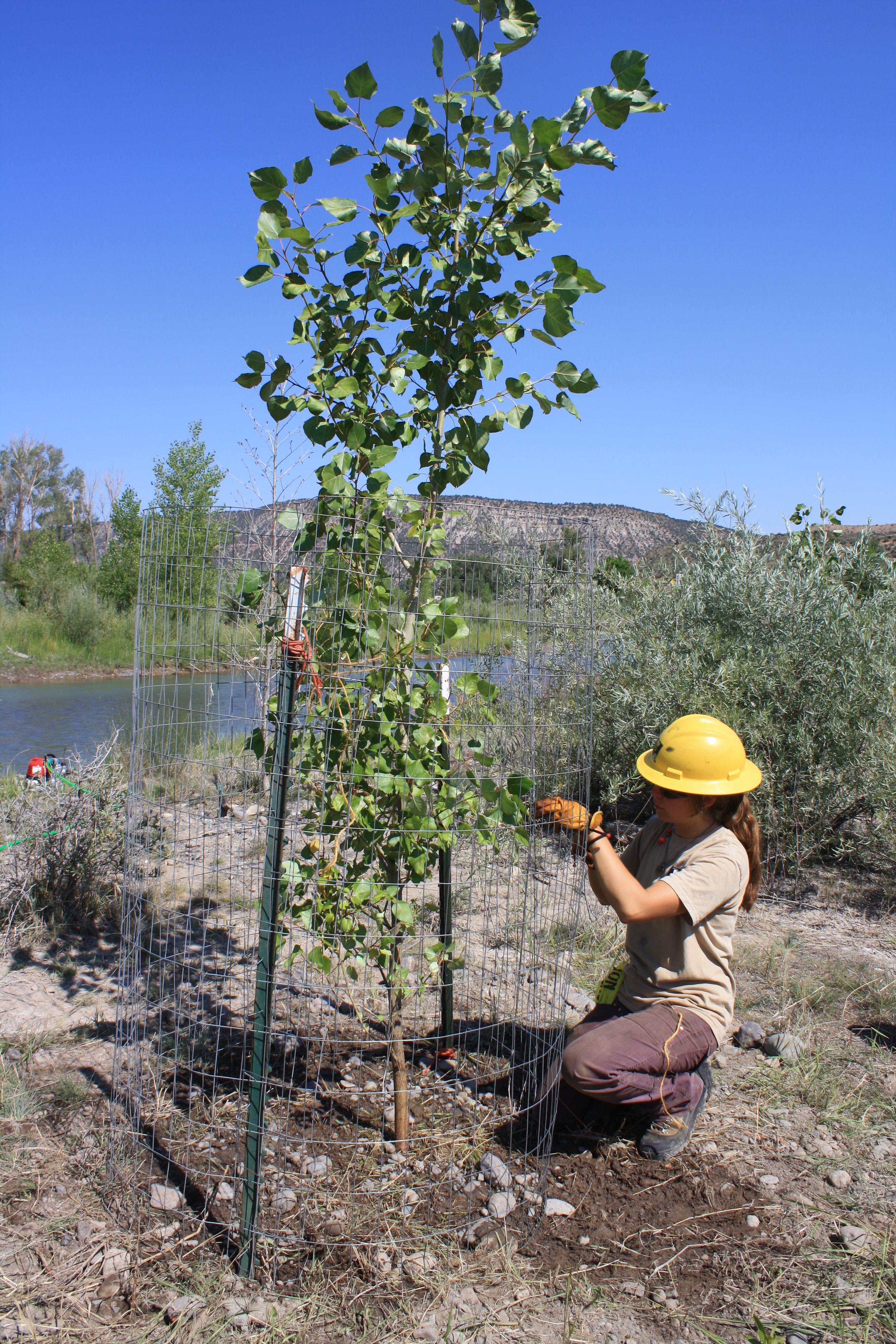 In the summer and fall of 2012, the UWP partnered with our county’s weed manager and the Town of Ridgway to increase native vegetation and improve stream bank structure at Rollans Park in Ridgway, CO. With help from the Noxious Weed Fund and a Colorado Watershed Restoration Program grant from the Colorado Water Conservation Board, we were able to plant 22 cottonwood trees and seed 1200 feet of Uncompahgre River’s stream bank with native grass seeds and flowers. The work was completed by our community volunteers, Humanists Doing Good, along with the Southwest Conservation Corps, who all did an amazing job working with us on this project. We plan to continue working on this project through the summer of 2013, when we will stake willows along the stream bank for additional erosion prevention. Help is very welcome and we encourage anyone who has time to volunteer to join us in this effort.
In the summer and fall of 2012, the UWP partnered with our county’s weed manager and the Town of Ridgway to increase native vegetation and improve stream bank structure at Rollans Park in Ridgway, CO. With help from the Noxious Weed Fund and a Colorado Watershed Restoration Program grant from the Colorado Water Conservation Board, we were able to plant 22 cottonwood trees and seed 1200 feet of Uncompahgre River’s stream bank with native grass seeds and flowers. The work was completed by our community volunteers, Humanists Doing Good, along with the Southwest Conservation Corps, who all did an amazing job working with us on this project. We plan to continue working on this project through the summer of 2013, when we will stake willows along the stream bank for additional erosion prevention. Help is very welcome and we encourage anyone who has time to volunteer to join us in this effort..jpg) Education is top-priority for our community and our watershed group. Currently, the UWP is conducting an educational needs assessment to paint a big picture of the county’s water education gaps. From there, we will expand or initiate new programs to facilitate place-based education in the county. In the meantime, we are still working strongly with our local schools. We celebrated Earth Day 2012 with Ridgway’s 4th Graders, National Public Lands Day with Ouray’s 4th graders, and we sample a local River Watch site with Ridgway’s 3rd graders every month (for a map of River Watch sites in the Uncompahgre Watershed area, go to www.coloradowater.org). Recently, the UWP began a partnership with the Ouray Public Library to develop even more educational programs.
Education is top-priority for our community and our watershed group. Currently, the UWP is conducting an educational needs assessment to paint a big picture of the county’s water education gaps. From there, we will expand or initiate new programs to facilitate place-based education in the county. In the meantime, we are still working strongly with our local schools. We celebrated Earth Day 2012 with Ridgway’s 4th Graders, National Public Lands Day with Ouray’s 4th graders, and we sample a local River Watch site with Ridgway’s 3rd graders every month (for a map of River Watch sites in the Uncompahgre Watershed area, go to www.coloradowater.org). Recently, the UWP began a partnership with the Ouray Public Library to develop even more educational programs.In June 2012, the UWP excitedly completed a 5-year-in-the-making document, our Uncompahgre Watershed Plan. This is a fantastic resource (available online at www.uncompahgrewatershed.org ) with water quality and riverine data for the entire watershed, starting from the headwaters in Ouray to where the river joins the Gunnison in Delta, CO. The UWP uses this document to identify priorities and projects for the future. We encourage all Uncompahgre River water users to reference this document if needed!
Two of the biggest problems impacting the Uncompahgre River are drought and heavy metal loading caused by legacy mining. The UWP is working on a water conservation program to help meet diverse water demands in the county and mitigate low water quantity caused by drought, as this problem affects our largely agricultural economy. Additionally, we recently applied for a Nonpoint Source 319 Grant to passively reduce acid mine drainage from two abandoned mines and one mill site in the Uncompahgre headwaters. Pending this funding, we will start project implementation in 2014.
.jpg) Lastly, please mark your calendars for the 3rd Annual San Juan Mining Conference to be held at the Moseley Art Center in Lake City, CO on April 18-19, 2013. The Lake Fork Valley Conservancy will host this year’s conference, which is free and open to the public. Speakers from federal, state and local agencies as well as professionals from the mining and environmental sector will share their perspectives and expertise on topics ranging from legacy mine remediation, contemporary mining practices, San Juan mining economies, and water quality assessments. This conference is sponsored by the UWP, Mountain Studies Institute, and the Lake Fork Valley Conservancy.
Lastly, please mark your calendars for the 3rd Annual San Juan Mining Conference to be held at the Moseley Art Center in Lake City, CO on April 18-19, 2013. The Lake Fork Valley Conservancy will host this year’s conference, which is free and open to the public. Speakers from federal, state and local agencies as well as professionals from the mining and environmental sector will share their perspectives and expertise on topics ranging from legacy mine remediation, contemporary mining practices, San Juan mining economies, and water quality assessments. This conference is sponsored by the UWP, Mountain Studies Institute, and the Lake Fork Valley Conservancy.Please visit our website www.uncompahgrewatershed.org for more information on all of our past work and future projects.
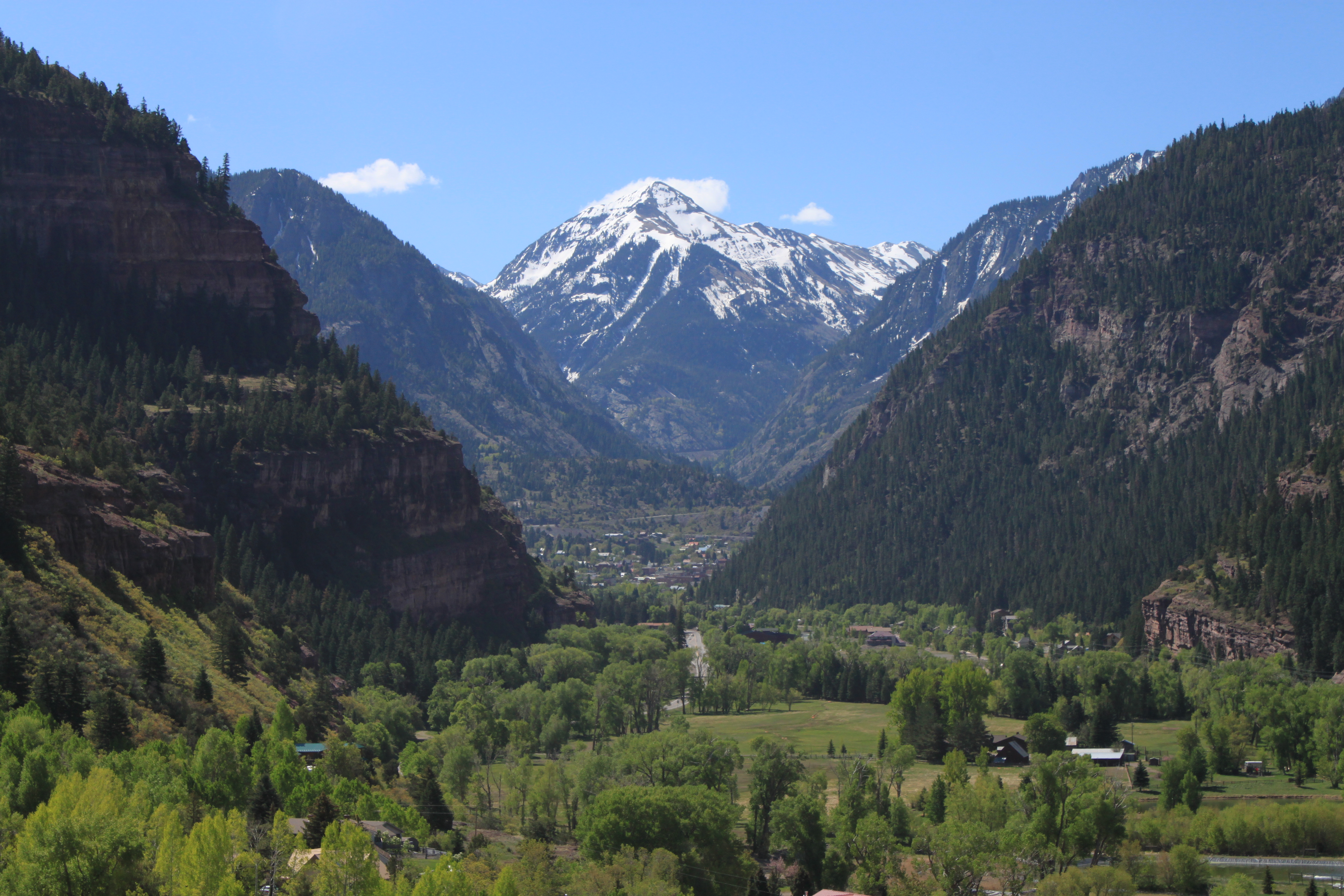 If you haven't been to explore Ouray County before, consider planning a trip out to visit with the UWP and discover more about the area, which includes the towns of Ridgway and Ouray, and is often referred to as the “Gem of the Rockies”. Enjoy a hike to in the San Juan Mountains and explore the historic 100-year old mining structures where people previously searched for ore, or simply get out to soak in the beautiful scenery. If you visit in the winter and are interested in experiencing world-class ice climbing, be sure to visit the Ouray Ice Park, followed by a relaxing trip to the sulfur-free Ouray Hot Springs Pool or the Orvis Hot Springs, in Ridgway. No matter what season you visit or what you end up doing, we know you will be glad you took the time to visit the gorgeous county of Ouray. Visit www.ouraycolorado.com and www.ridgwaycolorado.com for more ideas and start planning your visit today!
If you haven't been to explore Ouray County before, consider planning a trip out to visit with the UWP and discover more about the area, which includes the towns of Ridgway and Ouray, and is often referred to as the “Gem of the Rockies”. Enjoy a hike to in the San Juan Mountains and explore the historic 100-year old mining structures where people previously searched for ore, or simply get out to soak in the beautiful scenery. If you visit in the winter and are interested in experiencing world-class ice climbing, be sure to visit the Ouray Ice Park, followed by a relaxing trip to the sulfur-free Ouray Hot Springs Pool or the Orvis Hot Springs, in Ridgway. No matter what season you visit or what you end up doing, we know you will be glad you took the time to visit the gorgeous county of Ouray. Visit www.ouraycolorado.com and www.ridgwaycolorado.com for more ideas and start planning your visit today!*Photos courtesy of the Uncompahgre Watershed Partnership.
Purgatoire Watershed Partnership (PWP) Highlight - From the Inflow Newsletter: January 30, 2013
 The Purgatoire Watershed Partnership (PWP) has its home in Trinidad, Colorado and will be housed with the Spanish Peaks/Purgatoire River Conservation District. The Purgatoire River flows through four counties; Las Animas, Bent, Huerfano and Otero. PWP will work to promote watershed health throughout the entire Purgatoire River Watershed by building relationships and collaborating with stakeholder groups throughout all four counties.
The Purgatoire Watershed Partnership (PWP) has its home in Trinidad, Colorado and will be housed with the Spanish Peaks/Purgatoire River Conservation District. The Purgatoire River flows through four counties; Las Animas, Bent, Huerfano and Otero. PWP will work to promote watershed health throughout the entire Purgatoire River Watershed by building relationships and collaborating with stakeholder groups throughout all four counties.Due to increasing economic and energy development in the area, local stakeholders came together to form the PWP to address specific issues such as improved water quantity and quality, water education, invasive species, agricultural impacts, riparian restoration, wildlife habitat, coal mining, gas development, and forest health. A diverse Board of Directors has been chosen with representation from local industry, water rights holders, the environmental community, county government, landowners, local conservation entities, the recreation community, municipal government, the Purgatoire River Conservancy district, and the Pinon Canyon Maneuver Site.
With funding made available through a Cooperative Watershed Management Grant from the Bureau of Reclamation in September 2012, the PWP will be hiring a Watershed Coordinator. The successful applicant will be local and familiar with the watershed, connected to the community and able to maintain and expand stakeholder involvement. Other responsibilities will include general administrative tasks. The job description has been submitted to Colorado Workforce. To find out more about the job listing, click here and search for job posting number 5532305.
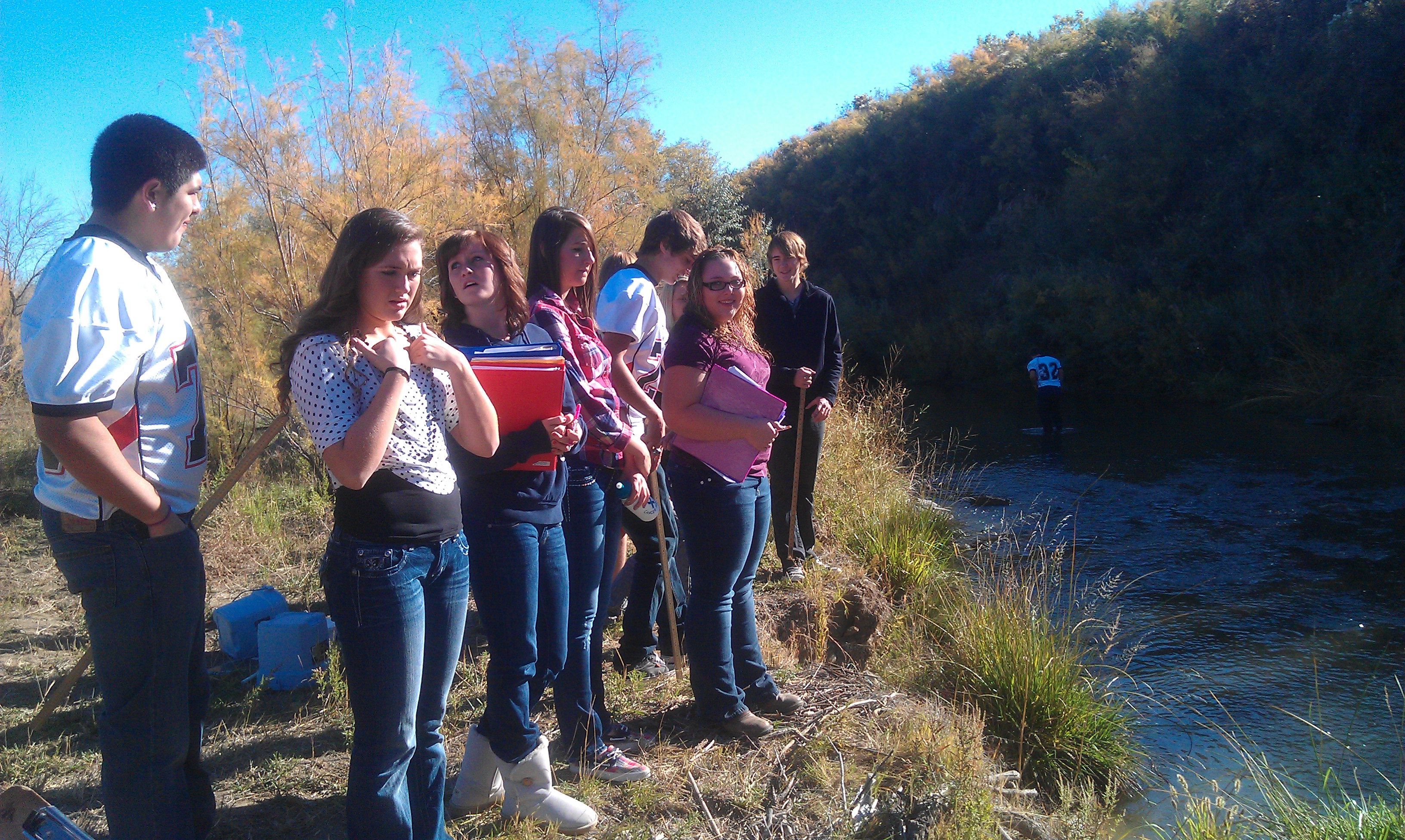 Data collection and analysis will be accomplished through the use of consulting contractors with specific expertise but the local community is also involved through the two River Watch Teams that are active in the Purgatoire Watershed: Tom Perry from the Culebra Range Community Coalition monitors a River Watch site located at BarNI Ranch, above human activity and disturbance on the middle fork of Dueling Creek. Hoehne High School also leads a River Watch team monitoring upstream from the BarNI site (See http://www.coloradowater.org/ for map). New volunteers are always welcome and will be trained in the scientific techniques and quality control measures that make River Watch the largest Colorado citizen science group, instrumental in providing high quality data to the EPA and state decision makers.
Data collection and analysis will be accomplished through the use of consulting contractors with specific expertise but the local community is also involved through the two River Watch Teams that are active in the Purgatoire Watershed: Tom Perry from the Culebra Range Community Coalition monitors a River Watch site located at BarNI Ranch, above human activity and disturbance on the middle fork of Dueling Creek. Hoehne High School also leads a River Watch team monitoring upstream from the BarNI site (See http://www.coloradowater.org/ for map). New volunteers are always welcome and will be trained in the scientific techniques and quality control measures that make River Watch the largest Colorado citizen science group, instrumental in providing high quality data to the EPA and state decision makers.
Coal Creek Watershed Coalition (CCWC) Highlight - From the Inflow Newsletter: June 20, 2012
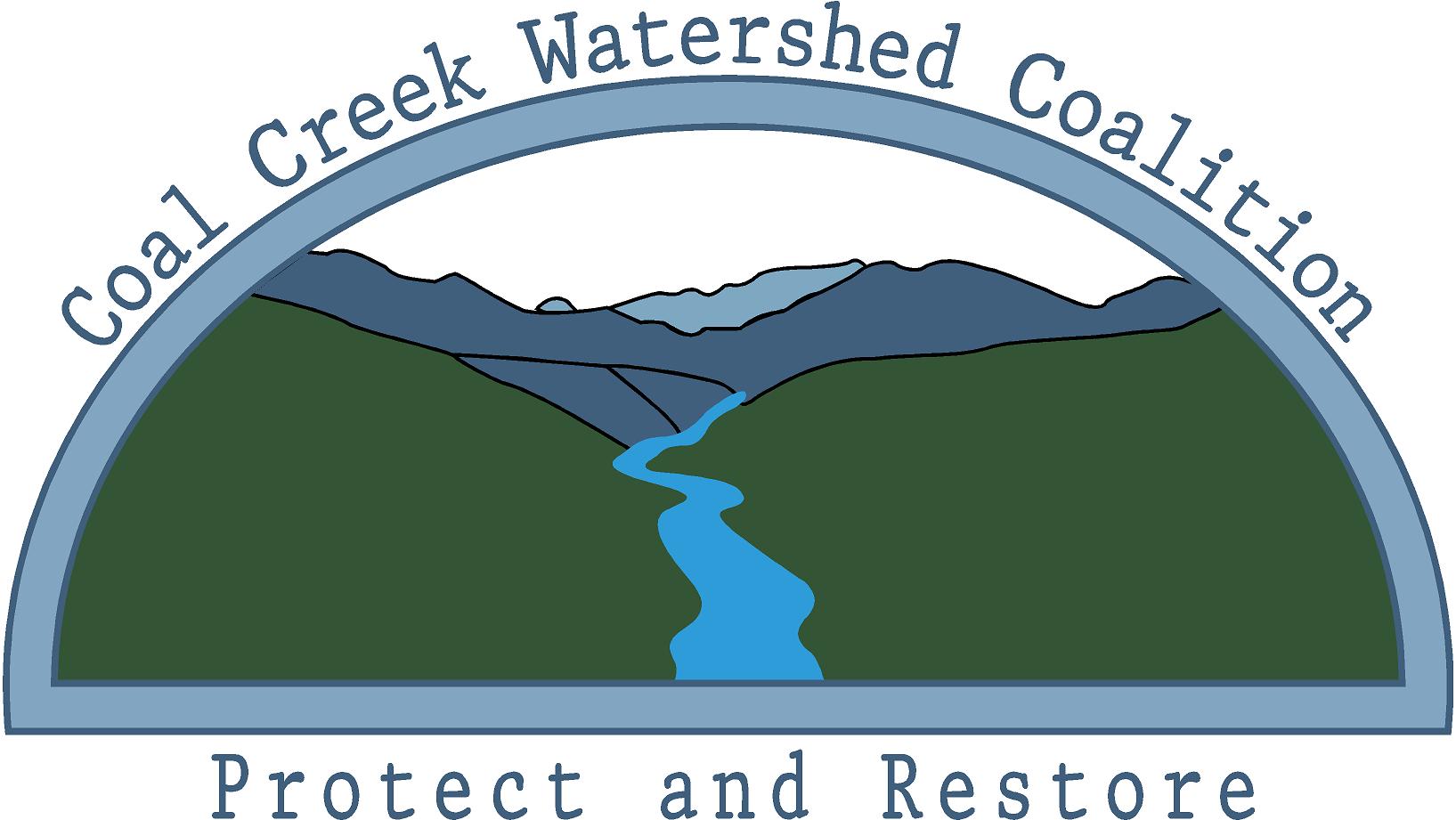 With the summer season comes the busy time of the year for the Coal Creek Watershed Coalition (CCWC), which means we’re excited to get back outdoors after planning all winter. As the leading voice on watershed restoration in and around Crested Butte, the CCWC takes a multi- pronged approach to watershed protection and health. To this end, the CCWC will manage multiple events and projects going on in both the Slate River and Coal Creek watersheds. First and foremost, the CCWC will continue to conduct water quality monitoring events in both the Coal Creek and Slate River watersheds this summer.
With the summer season comes the busy time of the year for the Coal Creek Watershed Coalition (CCWC), which means we’re excited to get back outdoors after planning all winter. As the leading voice on watershed restoration in and around Crested Butte, the CCWC takes a multi- pronged approach to watershed protection and health. To this end, the CCWC will manage multiple events and projects going on in both the Slate River and Coal Creek watersheds. First and foremost, the CCWC will continue to conduct water quality monitoring events in both the Coal Creek and Slate River watersheds this summer.
In 2011, the CCWC expanded its geographic reach of watershed protection and restoration to include the 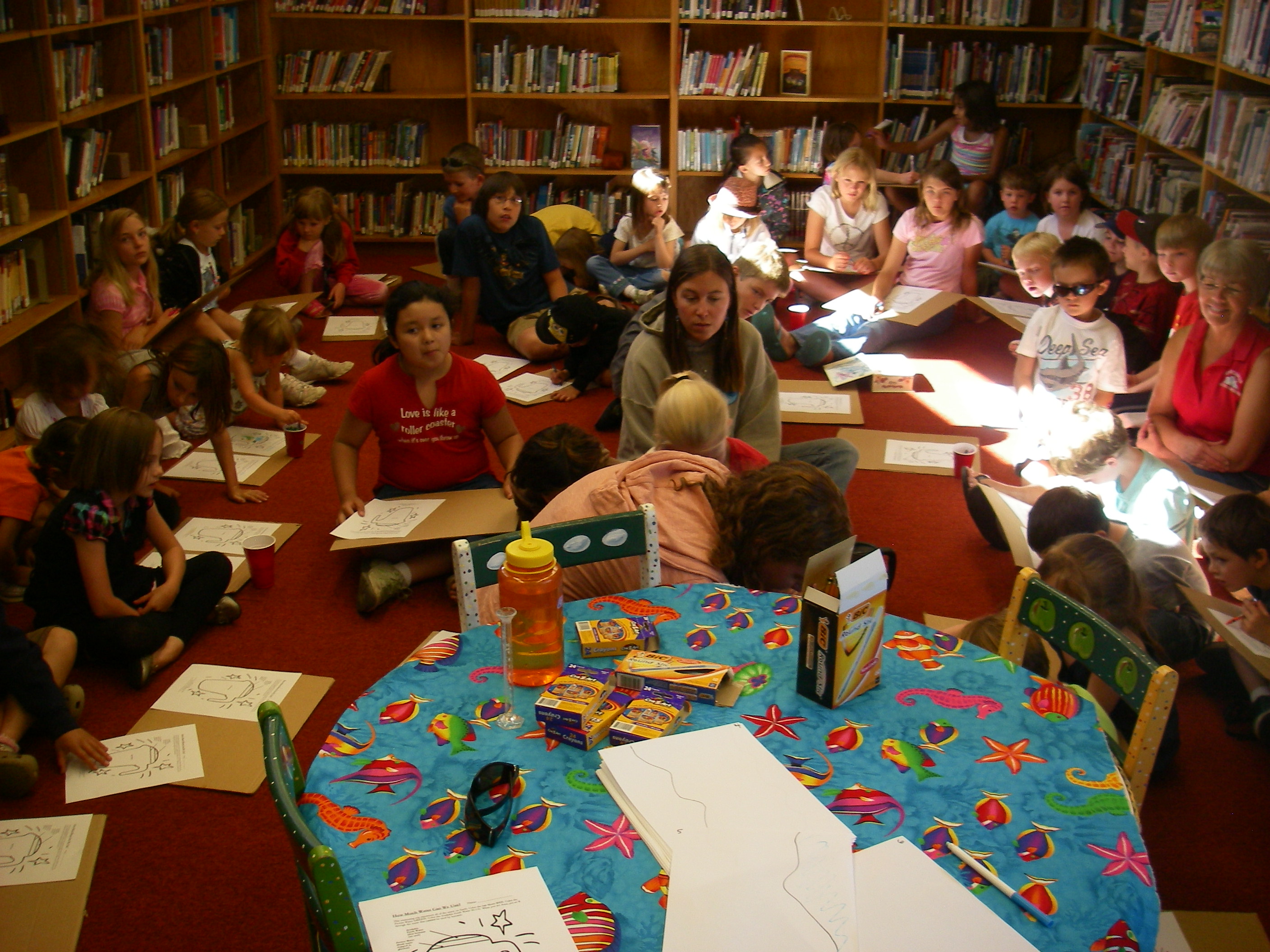
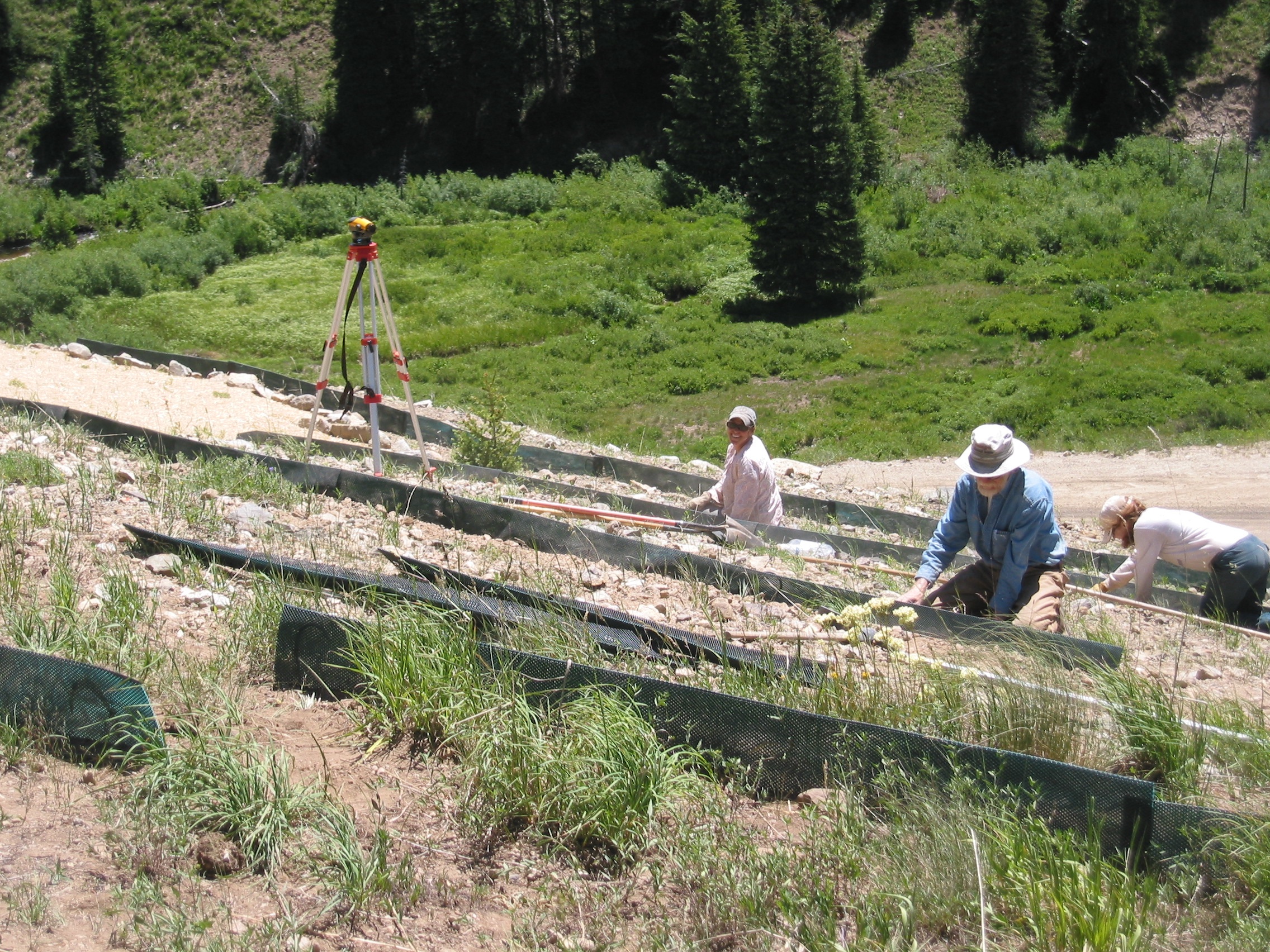 In the Coal Creek Watershed we will continue to maintain and install a variety of erosion control methods on specifically targeted sections of Kebler Pass Road to reduce the amount of sediment and chloride reaching Coal Creek. The CCWC is currently trying to secure funding to complete a wetland restoration project near a historic lumber mill site that sits in a wetland at the headwaters of Coal Creek at the turn off to Ohio Pass. Sawdust left at the site impacts the riparian habitat and natural hydrologic processes of the wetland. Additionally, the CCWC and the U.S. Forest Service (USFS) will continue to monitor groundwater levels and patterns at this unique wetland in an effort to better understand hydrology of this site. If all proceeds as planned, the CCWC and USFS will also enhance and create new wetlands to reduce the amount of metals reaching Coal Creek. With the help of the Colorado Division of Reclamation Mining and Safety we’ll be assessing four historic mine sites to determine what restoration efforts are needed, if any. The CCWC has also partnered with the Town of Crested Butte to redesign the diversion providing drinking water for the Town to improve performance of the diversion and to protect instream habitat.
In the Coal Creek Watershed we will continue to maintain and install a variety of erosion control methods on specifically targeted sections of Kebler Pass Road to reduce the amount of sediment and chloride reaching Coal Creek. The CCWC is currently trying to secure funding to complete a wetland restoration project near a historic lumber mill site that sits in a wetland at the headwaters of Coal Creek at the turn off to Ohio Pass. Sawdust left at the site impacts the riparian habitat and natural hydrologic processes of the wetland. Additionally, the CCWC and the U.S. Forest Service (USFS) will continue to monitor groundwater levels and patterns at this unique wetland in an effort to better understand hydrology of this site. If all proceeds as planned, the CCWC and USFS will also enhance and create new wetlands to reduce the amount of metals reaching Coal Creek. With the help of the Colorado Division of Reclamation Mining and Safety we’ll be assessing four historic mine sites to determine what restoration efforts are needed, if any. The CCWC has also partnered with the Town of Crested Butte to redesign the diversion providing drinking water for the Town to improve performance of the diversion and to protect instream habitat.
Further, the Environmental Protection Agency (EPA), Colorado Department of Public Health and Environment (CDPHE), and the USFS signed the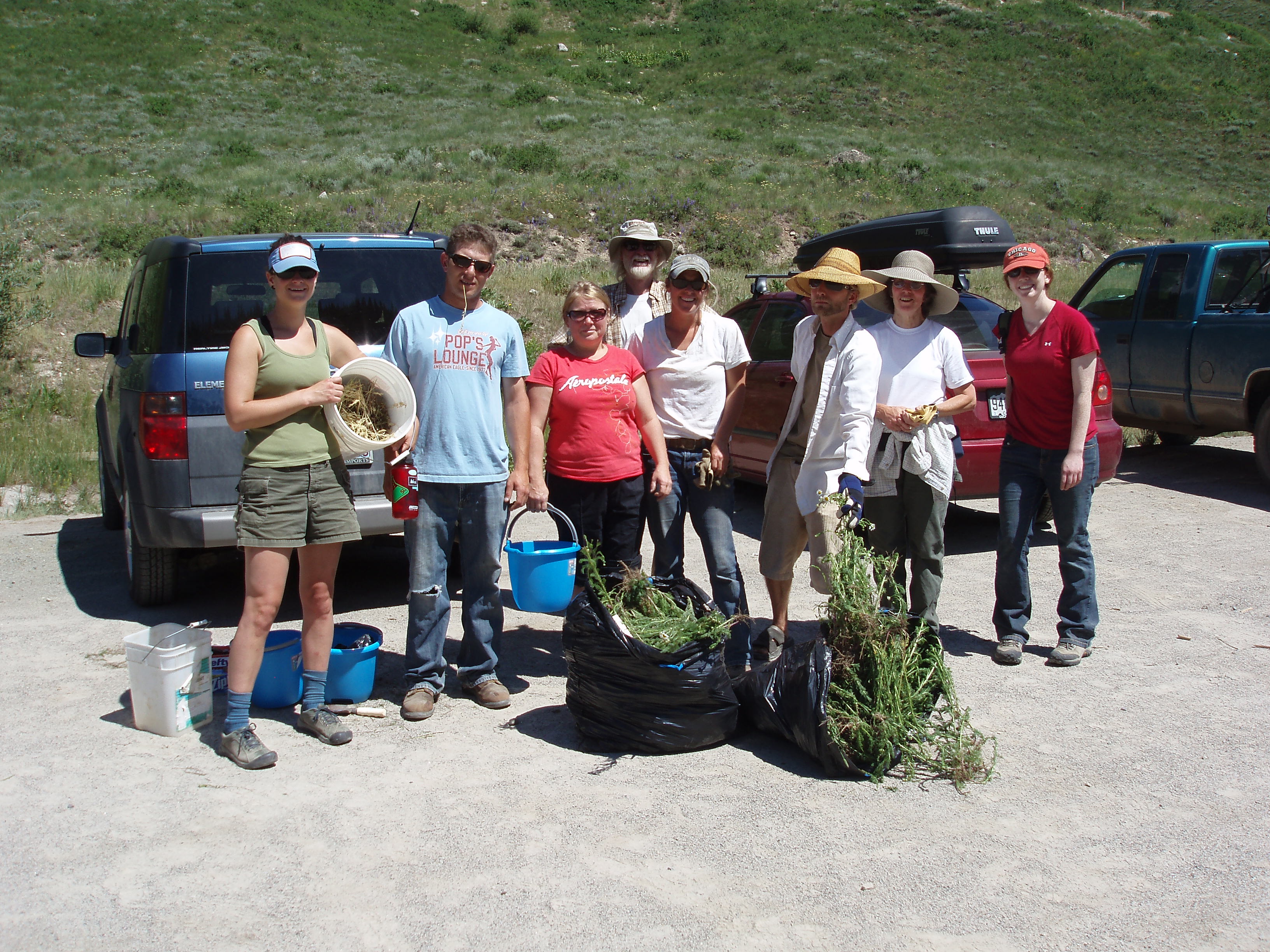
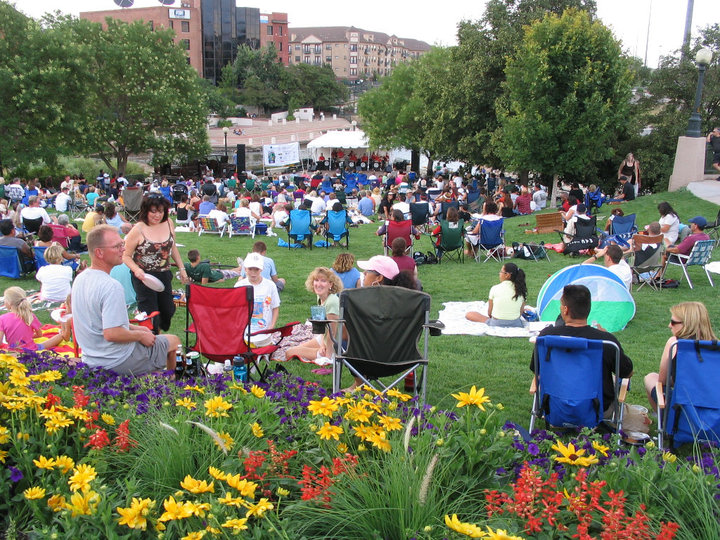
The Greenway Foundation's mission is to advance the South Platte River and the surrounding tributaries as a unique environmental, recreational, cultural, scientific and historic amenity that links our City's past and its future. Since it was established in 1974, the Foundation has worked hard to accomplish its mission through a variety of programs and activities including building trails and other outdoor recreation facilities, raising funds, creating the River Rangers program for summer youth work, SPREE (South Platte River Environmental Education) environmental education for grade schoolers, Venice on the Creek gondola rides, Confluence Concerts, several annual river cleanup events, PURE (Protect our Urban River Environment) water quality efforts, and the River Vision Implementation Plan, and the Mile High Mile, among many other events and projects you have heard about and/or attended.
When we spoke with Lisa May, Development Director with the Greenway Foundation, earlier this year – she was very excited to highlight three of the Foundation's programs: the River Rangers Program, the River Vision Implementation Plan, and the water quality improvement projects with PURE.
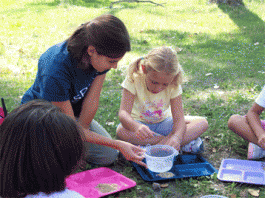 The River Rangers Program aims to connect Denver's youth with the city's urban waterways. This program was created around providing assistance to Denver Parks and Recreation and to assist with Venice on the Creek. However, in 2010, the River Rangers Program expanded to include opportunities for the youth employees to earn their Environmental Education Certification by leading day trips and summer camps in which the Rangers could serve as role models for younger children while building their leadership skills. Today, the Greenway Foundation hopes to provide a diverse population of youth in Denver with the opportunity to consider natural resources as a career option.
The River Rangers Program aims to connect Denver's youth with the city's urban waterways. This program was created around providing assistance to Denver Parks and Recreation and to assist with Venice on the Creek. However, in 2010, the River Rangers Program expanded to include opportunities for the youth employees to earn their Environmental Education Certification by leading day trips and summer camps in which the Rangers could serve as role models for younger children while building their leadership skills. Today, the Greenway Foundation hopes to provide a diverse population of youth in Denver with the opportunity to consider natural resources as a career option.
The Foundation worked with the City and County of Denver and Great Outdoors Colorado to create the River Vision Implementation Plan that includes 5 priority projects to improve the river and recreation along the River in Denver. These projects are considered the most fundable and most likely to be accomplished in the short-term. These priority projects include: Grant Frontier/Overland Regional Park, Art Bridge, Vanderbilt and Johnson-Habitat Parks, Sun Valley Riverfront Park, and safely improvements to Confluence Park. To view all of these plans and the images that go along with them, click here.
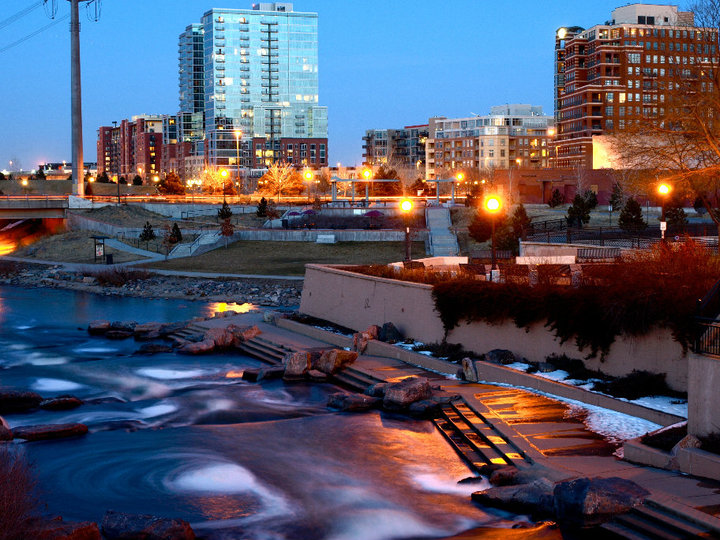 The Foundation believes that water quality improvement is incredibly important, and the PURE (Protect our Urban River Environment) initiative is working to reduce trash and trash-related pollution in the river through outreach, study of public behavior and raising public awareness. PURE is very committed to enhancing the recreational value of the river – for both in-river recreationists and users of the parks and trails along the river – which ties into the enhancements taking place through the River Vision Implementation Plan. Currently, PURE is making progress in building coalitions and collaborating with other groups in moving forward toward the initiative's goals.
The Foundation believes that water quality improvement is incredibly important, and the PURE (Protect our Urban River Environment) initiative is working to reduce trash and trash-related pollution in the river through outreach, study of public behavior and raising public awareness. PURE is very committed to enhancing the recreational value of the river – for both in-river recreationists and users of the parks and trails along the river – which ties into the enhancements taking place through the River Vision Implementation Plan. Currently, PURE is making progress in building coalitions and collaborating with other groups in moving forward toward the initiative's goals.
To learn more about The Greenway Foundation and all of the group's projects and events, visit www.greenwayfoundation.org. We hope to hear more about them and their successes for many years to come!
All images were provided by The Greenway Foundation.





